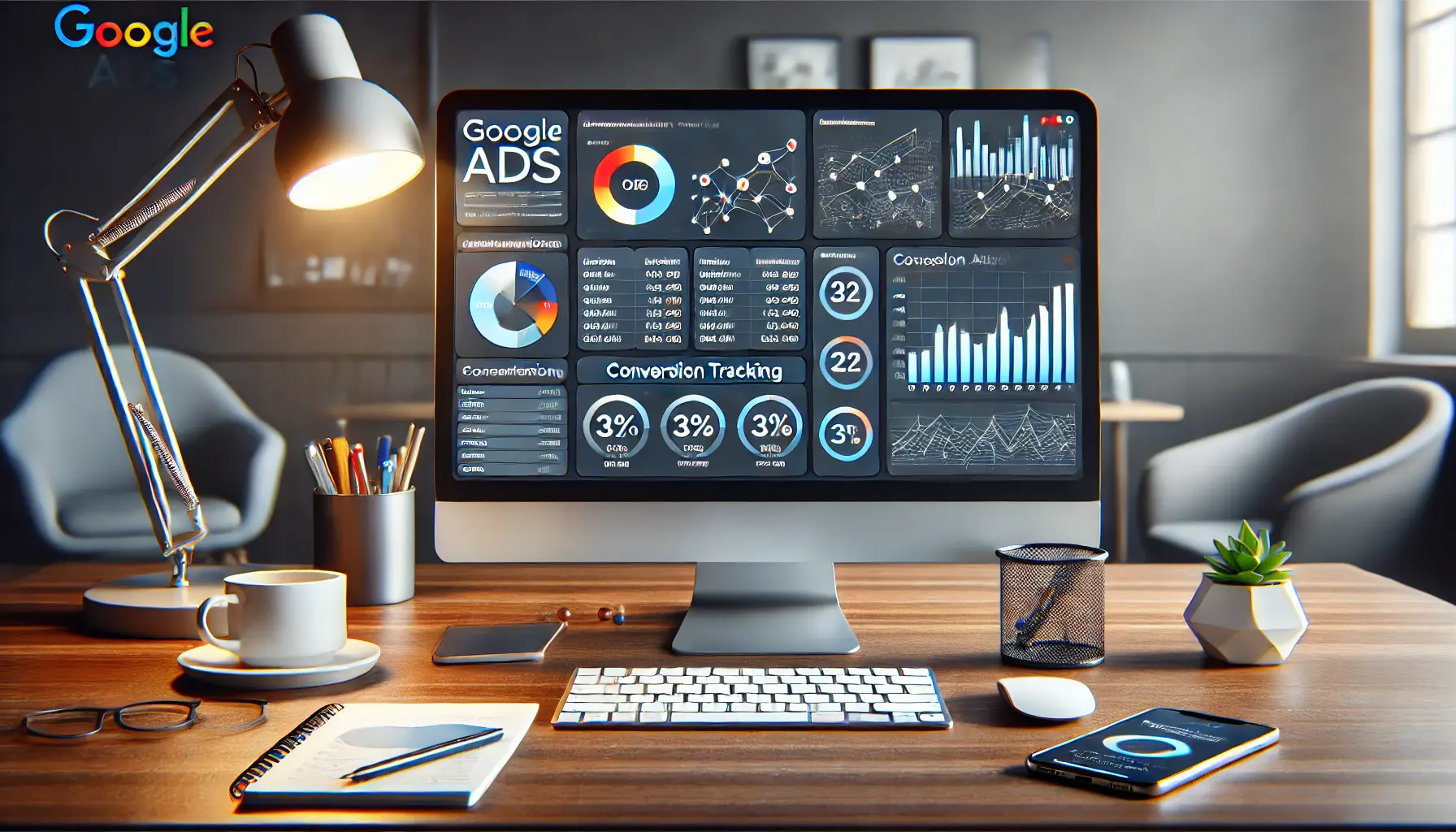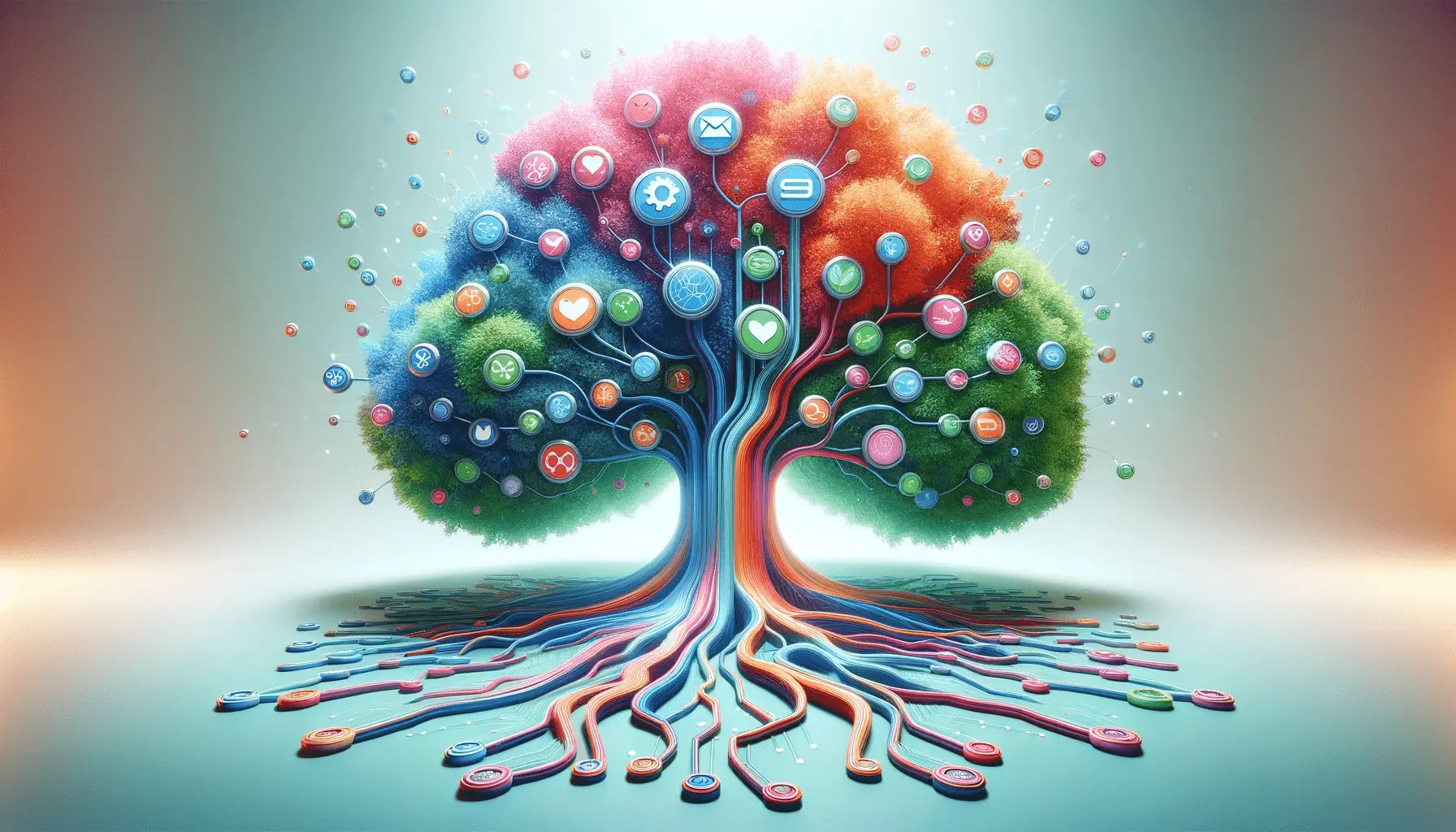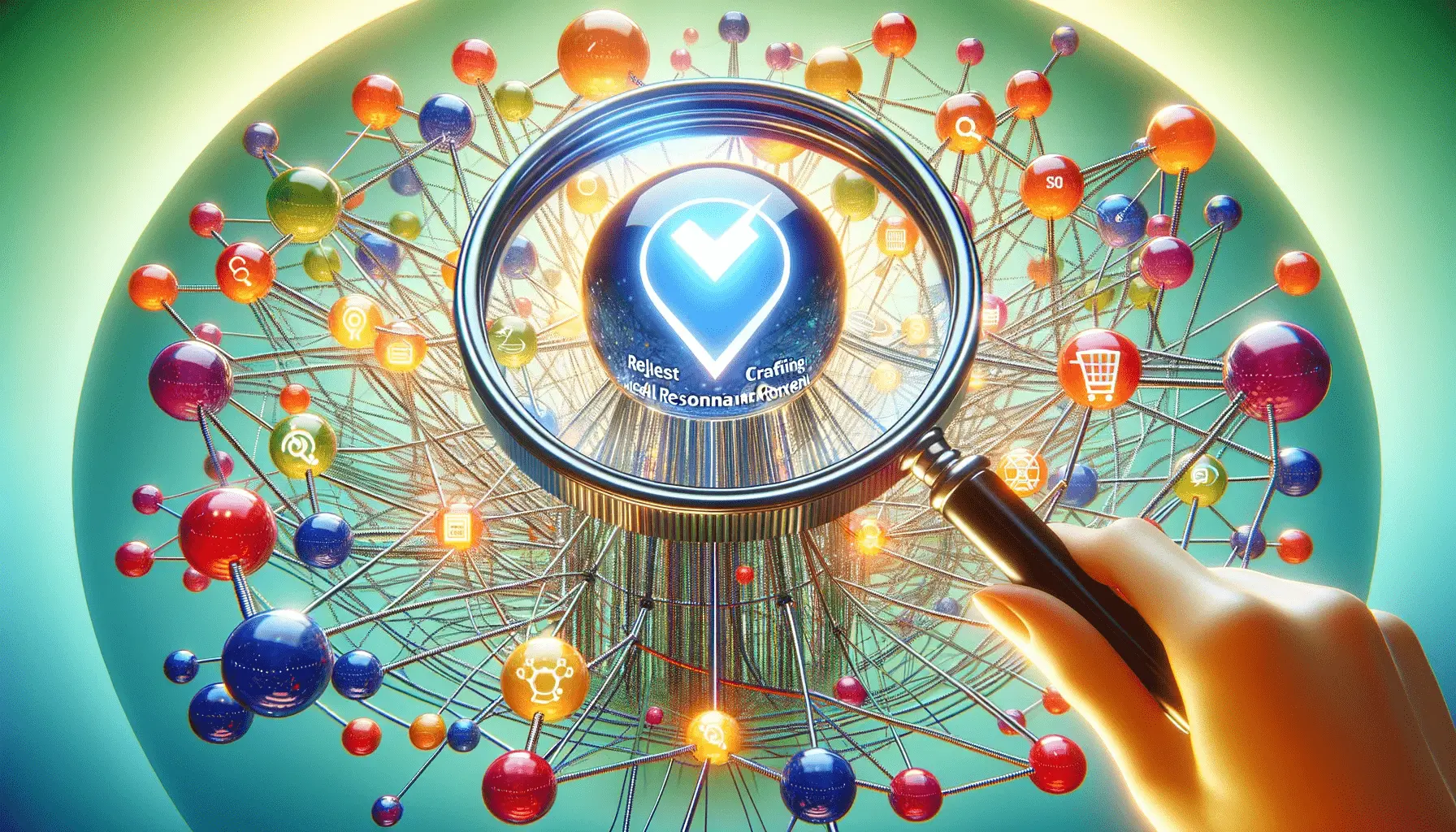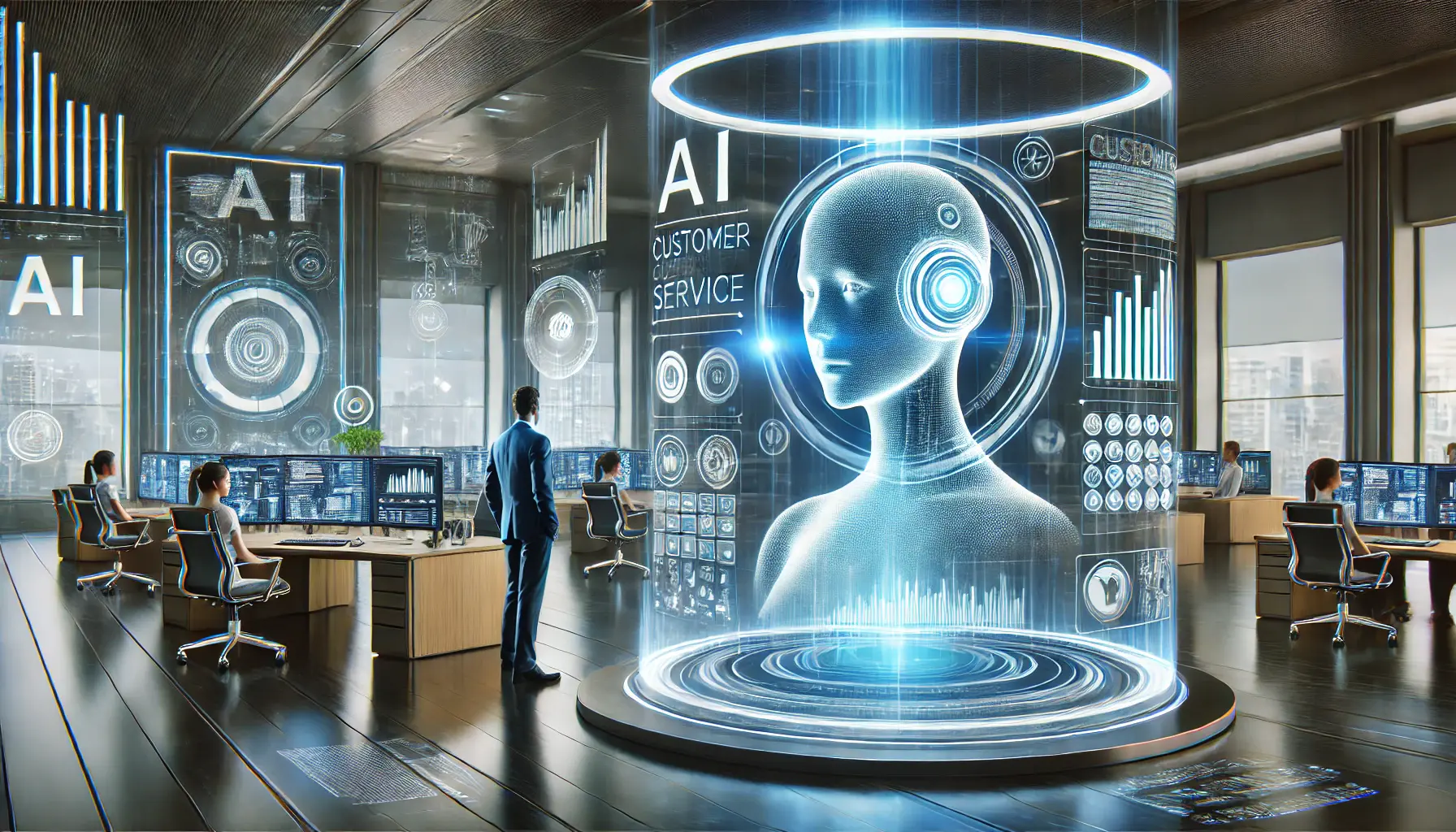Understanding the customer journey is pivotal in crafting content that not only engages but also converts.
In the realm of content marketing, customer journey mapping serves as a strategic approach to tailor content that resonates with the audience at every stage of their interaction with a brand.
This methodical process involves delineating the path a customer takes from becoming aware of a need to making a purchase decision and beyond.
It’s a holistic view that encompasses various touchpoints where customers interact with your content, offering invaluable insights into their preferences, behaviors, and pain points.
By integrating customer journey mapping into content marketing strategies, businesses can create more targeted, relevant, and impactful content.
This approach ensures that every piece of content serves a specific purpose, addressing the needs and questions of potential customers at the right time and in the right context.
It’s about moving beyond generic content to develop a deeper connection with your audience, guiding them through their decision-making process with information that is both helpful and persuasive.
- Introduction to Customer Journey Mapping
- Understanding the Awareness Stage
- Navigating the Consideration Stage
- Sealing the Deal in the Purchase Stage
- Cultivating Loyalty and Advocacy
- Measuring Success and Optimizing the Customer Journey
- Integrating Technology and Tools for Enhanced Content Marketing
- Conclusion: Mastering Customer Journey Mapping in Content Marketing
- FAQs on Customer Journey Mapping in Content Marketing
Introduction to Customer Journey Mapping
Customer journey mapping starts with a comprehensive understanding of your target audience.
It involves segmenting your audience into distinct personas, each with their unique characteristics, goals, and challenges.
This segmentation allows marketers to create more personalized content strategies that speak directly to the needs of their audience.
The journey itself is typically divided into several key stages: awareness, consideration, decision, and loyalty.
Each stage represents a different mindset of the customer, requiring a different content approach to effectively move them to the next step.
The power of customer journey mapping lies in its ability to reveal the most effective content types and channels for engaging your audience.
For instance, during the awareness stage, educational blog posts and social media content can help attract attention and build trust.
As customers move into the consideration phase, more detailed content such as case studies, webinars, and product comparisons become crucial in influencing their decision-making.
This strategic alignment of content with the customer journey not only enhances the customer experience but also boosts the overall effectiveness of your content marketing efforts.
Benefits of Customer Journey Mapping
Implementing customer journey mapping in your content marketing strategy offers several benefits.
Firstly, it ensures that your content is always relevant and timely, meeting your audience’s needs at exactly the right moment.
This relevance is key to capturing and maintaining the interest of potential customers, ultimately leading to higher engagement rates and conversion.
Additionally, journey mapping allows for a more efficient allocation of marketing resources.
By understanding which types of content perform best at different stages of the journey, you can focus your efforts on what truly works, avoiding wasted time and budget on less effective tactics.
Another significant advantage is the enhanced ability to measure and optimize your content marketing strategy.
With a clear map of the customer journey, you can more accurately track how individual pieces of content contribute to moving customers through the funnel.
This insight enables continuous improvement of your content strategy, ensuring that it remains aligned with your audience’s evolving needs and preferences.
Ultimately, customer journey mapping fosters a deeper understanding of your audience, empowering you to create content that not only resonates but also drives meaningful results for your business.
Customer journey mapping is a cornerstone of effective content marketing, enabling businesses to create more personalized, impactful content that resonates with their audience at every stage of their journey.
Understanding the Awareness Stage
The awareness stage marks the beginning of the customer’s journey.
It’s where potential customers first become aware of a problem or need that they have.
At this juncture, the primary goal of your content should be to educate and inform, rather than to sell.
Content that is too sales-oriented can be off-putting to customers who are not yet ready to make a purchase decision.
Instead, focus on providing value through informative content that addresses the common questions and challenges your audience may face.
Content in the awareness stage should aim to establish your brand as a thought leader and a reliable source of information.
This is your opportunity to make a strong first impression and to build trust with your audience.
By offering helpful, educational content, you can create a positive association with your brand that encourages potential customers to engage further.
Key Content Types for the Awareness Stage
- Blog Posts: Comprehensive articles that address common problems, answer questions, and provide valuable insights related to your industry.
- Infographics: Visual content that summarizes important information and data in an easily digestible format.
- Educational Videos: Short videos that explain concepts, demonstrate how to solve specific problems, or offer tips and best practices.
- Social Media Content: Engaging posts that highlight key facts, share industry news, or pose questions to spark conversation and build community.
Optimizing Content for the Awareness Stage
To ensure your content effectively reaches and engages your audience during the awareness stage, consider the following strategies:
- Focus on SEO: Optimize your content for search engines to increase its visibility. Use relevant keywords, meta descriptions, and engaging titles that reflect the search queries of your target audience.
- Share Across Channels: Distribute your content across multiple channels, including social media, email newsletters, and other platforms where your audience is active. This increases the reach of your content and helps attract more visitors to your website.
- Encourage Engagement: Include calls-to-action (CTAs) that invite readers to learn more, share their thoughts, or follow your brand on social media. Engagement helps build a relationship with your audience and encourages them to explore further.
By focusing on educational and informative content during the awareness stage, you can effectively guide potential customers into the consideration phase of their journey, setting the stage for deeper engagement.
Navigating the Consideration Stage
As potential customers move into the consideration stage, their focus shifts from understanding their problem to evaluating the available solutions.
At this point, your content should help them compare options and understand why your product or service is the best choice.
The consideration stage is critical because it’s where preferences are formed and decisions are narrowed down.
Your content must be persuasive yet informative, providing clear reasons and evidence that support the superiority of your solution.
Content in this stage should delve deeper into the specifics of your offerings, highlighting unique features, benefits, and the value proposition.
It’s about showing potential customers how your solution can meet their needs better than any other option on the market.
The aim is to position your brand as the preferred choice, leading them closer to a purchase decision.
Effective Content Types for the Consideration Stage
- Comparison Guides: Content that compares your product or service with competitors, highlighting your advantages.
- Case Studies: Real-life examples of how your product or service has successfully solved problems for other customers.
- Webinars: In-depth presentations that provide valuable information about your industry, product, or service, and answer live questions from potential customers.
- Product Demos: Videos or interactive demos that showcase the functionality and benefits of your product or service in action.
Strategies for Maximizing Impact in the Consideration Stage
To make your content as effective as possible during the consideration stage, implement the following tactics:
- Highlight Differentiators: Clearly articulate what sets your product or service apart from the competition. Focus on unique features, superior quality, better value, or exceptional customer service.
- Use Social Proof: Incorporate testimonials, reviews, and case studies into your content to build trust and credibility. Social proof can significantly influence decision-making by showing potential customers that others have had positive experiences with your brand.
- Provide Detailed Information: Offer comprehensive resources that answer potential questions and concerns. Detailed product specifications, FAQs, and how-to guides can help customers feel more confident in their decision to choose your brand.
The consideration stage is about building confidence in your brand and solution. By providing detailed, comparative, and evidence-based content, you can effectively guide potential customers toward making a purchase decision.
Sealing the Deal in the Purchase Stage
Entering the purchase stage signifies that potential customers have evaluated their options and are on the brink of making a buying decision.
Content at this juncture plays a crucial role in tipping the scales in your favor.
It’s about reinforcing the decision to choose your brand, addressing any last-minute hesitations, and making the purchase process as smooth and appealing as possible.
The content should provide a clear and compelling call to action, guiding customers through the final steps of conversion.
At this stage, the focus shifts to conversion optimization.
Your content must underscore the value and benefits of your product or service, reminding customers why they considered your solution in the first place.
It’s also important to alleviate any concerns or objections that might prevent them from completing the purchase.
Effective communication and reassurance can make all the difference in converting a potential customer into a loyal one.
Key Content Formats for the Purchase Stage
- FAQs: Address common questions and concerns that customers might have before making a purchase.
- Special Offers: Promotions, discounts, or exclusive deals that encourage immediate action.
- Testimonials and Reviews: Positive feedback from satisfied customers that reinforce the value and effectiveness of your product or service.
- Secure Checkout Process: Information on security measures, payment options, and return policies that make customers feel safe and supported in their purchase.
Optimizing Content for Conversion
To maximize conversions in the purchase stage, consider these strategies:
- Streamline the Purchase Process: Ensure that the path to purchase is clear, straightforward, and free of unnecessary steps or complications. A smooth checkout experience can significantly increase conversion rates.
- Emphasize Urgency and Scarcity: Use language that conveys the limited availability of special offers or the potential for products to sell out. This can motivate customers to act quickly.
- Reiterate Value and Benefits: Summarize the key advantages of your product or service, highlighting how it meets the customer’s needs and exceeds their expectations.
The purchase stage is your opportunity to close the deal with confidence and clarity. By providing targeted, reassuring content that addresses final concerns and facilitates a seamless buying experience, you can convert interest into action and gain new customers.
Cultivating Loyalty and Advocacy
After successfully navigating the purchase stage, the journey doesn’t end.
The loyalty and advocacy stage is where businesses have the opportunity to turn new customers into lifelong fans and brand ambassadors.
This phase is crucial for sustaining long-term growth and building a positive brand reputation.
Content marketing plays a significant role in nurturing customer relationships post-purchase, ensuring customers feel valued and engaged.
It’s about exceeding expectations, providing ongoing support, and encouraging customers to share their positive experiences with others.
Effective content at this stage keeps your brand top-of-mind and reinforces the customer’s decision to choose your product or service.
It also opens the door for upselling and cross-selling by introducing customers to other offerings that may interest them.
By consistently delivering value beyond the initial purchase, you can foster a sense of community and loyalty that translates into repeat business and referrals.
Engaging Content for Loyalty and Advocacy
- Thank You Messages: Personalized communications that express gratitude for the customer’s business and welcome them to your brand community.
- User Guides and Tutorials: Resources that help customers get the most out of their purchase, enhancing satisfaction and reducing the likelihood of returns or complaints.
- Loyalty Programs: Initiatives that reward customers for repeat purchases or referrals, incentivizing continued engagement with your brand.
- Customer Spotlights: Featuring stories or testimonials from satisfied customers, showcasing real-life success stories and fostering a sense of belonging among your customer base.
Strategies to Encourage Loyalty and Advocacy
To turn customers into loyal advocates, implement the following approaches:
- Provide Exceptional Customer Service: Offer responsive, helpful support to address any issues or questions that arise after the purchase. A positive customer service experience can significantly impact loyalty.
- Engage on Social Media: Maintain an active presence on social media platforms where your customers are likely to spend their time. Use these channels to share valuable content, respond to feedback, and foster community.
- Seek Customer Feedback: Regularly solicit feedback from your customers to show that you value their opinions and are committed to continuous improvement. This can also provide valuable insights for future content and product development.
Building loyalty and advocacy requires a focus on long-term customer satisfaction and engagement. By delivering ongoing value and maintaining open lines of communication, you can create a loyal customer base that actively promotes your brand to others.
Measuring Success and Optimizing the Customer Journey
Understanding and mapping the customer journey is just the beginning.
To truly excel in content marketing, businesses must continuously measure the effectiveness of their strategies and optimize the customer journey based on data-driven insights.
This involves analyzing customer interactions, content performance, and overall satisfaction across all stages of the journey.
By doing so, you can identify areas for improvement, adjust your content strategy accordingly, and ensure that you are meeting the evolving needs of your audience.
Measuring success in content marketing is multifaceted, encompassing a range of metrics from engagement rates to conversion and retention.
It’s about looking beyond surface-level analytics to understand the deeper impact of your content on the customer experience.
This requires a commitment to ongoing learning and adaptation, as well as a willingness to innovate and experiment with new approaches.
Key Metrics for Measuring Content Marketing Success
- Engagement Metrics: Track how users interact with your content, including page views, time on page, social shares, and comments. High engagement indicates that your content is resonating with your audience.
- Conversion Rates: Measure the percentage of users who take a desired action after engaging with your content, such as making a purchase or signing up for a newsletter. This helps gauge the effectiveness of your content in driving business outcomes.
- Customer Satisfaction: Use surveys, feedback forms, and reviews to assess how satisfied customers are with your content and overall experience. This can provide valuable insights into areas for improvement.
- Retention and Loyalty: Monitor repeat purchase rates and participation in loyalty programs to understand how well your content is fostering long-term customer relationships.
Optimizing the Customer Journey Through Content
To optimize the customer journey, consider the following strategies:
- Personalize Content: Use customer data to tailor content to the individual needs and preferences of your audience. Personalization can significantly enhance the relevance and impact of your content.
- Test and Learn: Experiment with different content formats, channels, and messaging to see what works best. Use A/B testing to make data-driven decisions about your content strategy.
- Focus on Quality: Ensure that all content is high-quality, informative, and aligned with your brand values. Consistently delivering valuable content can strengthen your brand’s reputation and customer loyalty.
Success in content marketing is not a one-time achievement but a continuous process of measurement, optimization, and adaptation. By staying attuned to the needs of your customers and leveraging data to inform your strategy, you can create a more effective and engaging customer journey.
Integrating Technology and Tools for Enhanced Content Marketing
In today’s digital landscape, leveraging technology and tools is essential for enhancing content marketing strategies and effectively managing the customer journey.
From content creation and distribution to analytics and personalization, a wide array of digital solutions can streamline operations, provide deeper insights, and create more meaningful connections with your audience.
Embracing these technologies not only optimizes the content marketing process but also ensures that businesses can adapt to changing consumer behaviors and market dynamics.
By integrating the right tools into your content marketing strategy, you can automate repetitive tasks, personalize content at scale, and measure the impact of your efforts with greater accuracy.
This enables marketers to focus on creative and strategic tasks that drive growth and engagement.
Furthermore, technology can facilitate a more cohesive and consistent customer experience across all touchpoints, reinforcing brand messaging and values.
Essential Tools for Content Marketing Success
- Content Management Systems (CMS): Platforms that allow you to create, manage, and optimize your website content easily. A robust CMS is the backbone of any effective content marketing strategy.
- Customer Relationship Management (CRM) Software: Tools that help you manage interactions with current and potential customers, enabling personalized communication and better understanding of customer needs.
- Analytics and Data Analysis Tools: Solutions that provide insights into content performance, audience behavior, and conversion metrics, guiding data-driven decision-making.
- Email Marketing Platforms: Services that facilitate the creation, automation, and optimization of email campaigns, an essential channel for nurturing leads and engaging customers.
- Social Media Management Tools: Applications that streamline the scheduling, posting, and analysis of social media content, enhancing your brand’s presence on these platforms.
Leveraging Technology for Personalization and Automation
One of the most significant advantages of integrating technology into content marketing is the ability to personalize content for individual users.
Advanced CRM and marketing automation tools can segment audiences based on behavior, preferences, and demographics, allowing for highly targeted content strategies.
This level of personalization can dramatically improve engagement rates and customer satisfaction.
Additionally, automation tools can help manage the distribution of content across multiple channels, ensuring that the right message reaches the right audience at the right time.
Automation also enables consistent communication with your audience, keeping your brand top-of-mind and fostering a sense of loyalty and trust.
While technology can significantly enhance content marketing efforts, it’s important to remember that it should not replace human creativity and empathy. The most successful content marketing strategies blend technological efficiency with genuine, compelling storytelling that resonates with the human experience.
Conclusion: Mastering Customer Journey Mapping in Content Marketing
In the digital age, where consumer attention is fragmented across various platforms, mastering customer journey mapping in content marketing has become more crucial than ever.
This comprehensive approach not only enhances the effectiveness of content marketing efforts but also ensures a seamless and personalized experience for customers at every touchpoint.
By understanding and anticipating the needs, behaviors, and pain points of your audience, you can craft content that resonates deeply, drives engagement, and ultimately, converts prospects into loyal customers.
Key Takeaways for Effective Customer Journey Mapping
- Start with a deep understanding of your target audience to create accurate buyer personas.
- Map out each stage of the customer journey, from awareness to loyalty, and identify the most impactful content types for each phase.
- Leverage technology and tools to personalize content, automate distribution, and measure success accurately.
- Continuously optimize your content strategy based on data-driven insights and feedback from your audience.
Implementing customer journey mapping in content marketing is not a one-time task but a continuous process of learning, adapting, and evolving.
As consumer preferences shift and new technologies emerge, staying attuned to these changes and adjusting your content strategy accordingly will be key to maintaining relevance and driving long-term success.
Creating a Future-Proof Content Marketing Strategy
The future of content marketing lies in the ability to deliver the right message, to the right person, at the right time.
By mastering customer journey mapping, businesses can achieve this with greater precision and impact.
The integration of creativity, empathy, and technology will be fundamental in crafting content that not only meets the immediate needs of your audience but also fosters lasting relationships and brand loyalty.
In conclusion, customer journey mapping in content marketing is an invaluable strategy for businesses aiming to connect with their audience on a deeper level.
By focusing on the customer’s needs and preferences at every stage of their journey, you can create a content marketing strategy that is not only effective but also enduring.
Remember, the goal is to guide your customers through their journey with content that educates, inspires, and ultimately, converts.
Want your website to top Google search rankings? Leave the SEO to our professional agency!
FAQs on Customer Journey Mapping in Content Marketing
Explore commonly asked questions about integrating customer journey mapping into your content marketing strategy to enhance customer experience and engagement.
It’s a strategic approach to visualize the customer’s experience with your brand from initial awareness to loyalty, guiding content creation at each stage.
Mapping identifies key interactions and touchpoints, enabling personalized content strategies that effectively engage and convert potential customers.
It depends on your audience segments. Each distinct persona or customer type might require its own map to address specific needs and behaviors.
Yes, by aligning content with customer needs at each journey stage, businesses can increase engagement, conversions, and ultimately, content marketing ROI.
Educational blog posts, infographics, and videos that inform and engage potential customers without hard selling are most effective.
Focus on comparison guides, case studies, and webinars that showcase your product’s benefits and differentiate it from competitors.
Utilize strong CTAs, product demos, special offers, and testimonials to address final concerns and encourage purchase decisions.
Deliver exceptional customer service, create engaging user guides, and implement loyalty programs to keep customers engaged and satisfied.













